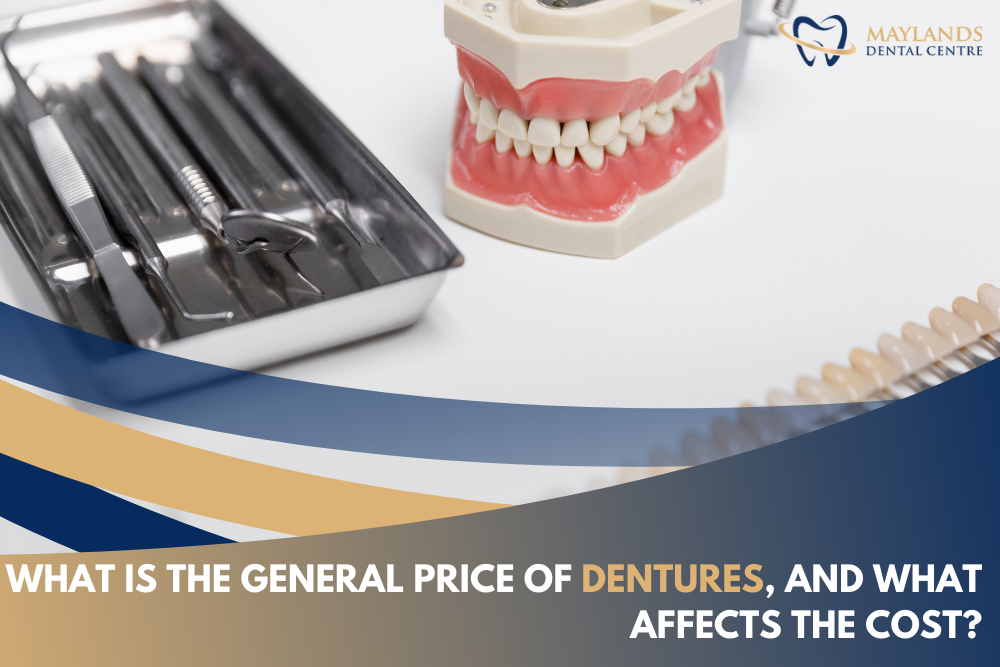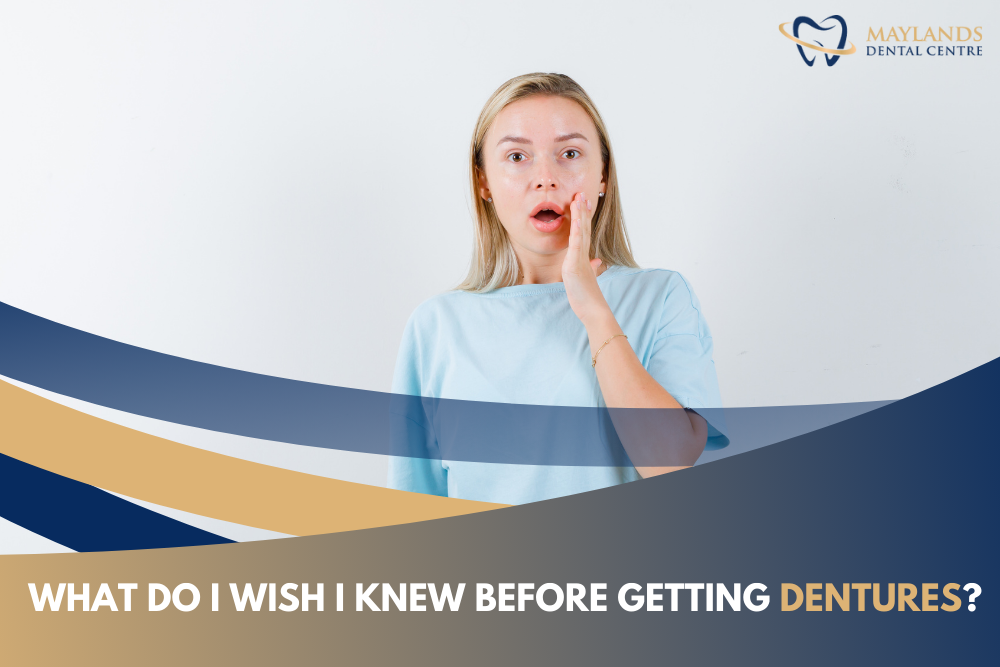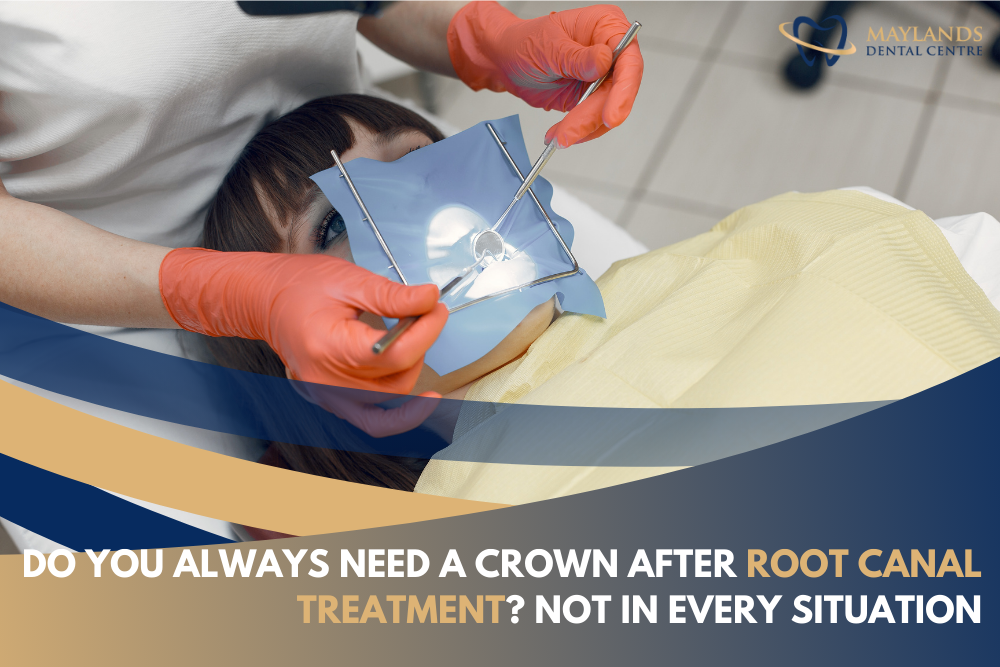Stained or discoloured teeth are a common concern, and it’s easy to see why so many people turn to whitening treatments for a confidence boost. Everyday habits like sipping coffee, tea, or red wine—and even just ageing—can quietly dim your once-bright smile. Before a big event like a wedding, job interview, or holiday, it’s natural to want fast and noticeable results.
However, not all whitening methods are equally suited for everyone. Some may work quickly, but they come with potential trade-offs, such as sensitivity or uneven results. With so many options out there, it can be tricky to know what’s genuinely effective and what’s just clever marketing. That’s why it’s important to look at each method through a lens of both speed and safety.
In this blog, we’ll explore the real answer to a common question, “What actually whitens teeth fast—and safely?” We’ll compare popular options, highlight how quickly you might see results, and discuss which treatments are supported by evidence. Our aim is to give you practical, research-backed information so you can confidently choose the option that’s right for your smile.
Blog Navigation
Summary of the Content:
- Professional in-chair whitening uses peroxide gels activated by light, producing noticeable results—often after a single session.
- Supervised by a dentist, the in-chair approach allows controlled gel application and helps reduce the risk of gum irritation or tooth sensitivity.
- Take-home kits prescribed by dentists include custom-fitted trays and lower-strength gels for gradual results over one to two weeks.
- These whitening kits offer the convenience of home use while still benefiting from professional oversight and tailored guidance.
- Over-the-counter options, such as whitening strips and toothpastes, usually act more slowly and may be misused without dental advice.
- Natural methods, such as charcoal or baking soda, are not strongly supported by evidence and can wear down enamel if overused.
- Factors like the cause of discolouration, enamel thickness, and daily habits influence how well a whitening method works.
- Whitening speed and results vary with your goals and oral condition, and professional guidance helps identify safe, appropriate options.
Professional In-Chair Teeth Whitening

Professional in-chair whitening is a commonly chosen option for people looking to brighten their smile with noticeable results in a short timeframe. The treatment is performed by a dentist using high-concentration teeth whitening gels and clinical equipment not available in over-the-counter products.
According to research, tooth whitening is safer and more effective when performed under professional supervision, reducing the risk of irritation or sensitivity. The approach is tailored through individual assessment and precise control of the whitening process.
What makes this method work efficiently lies in the combination of medically formulated gels, activation technology, and dentist monitoring. Here’s a breakdown:
- High-strength peroxide concentration:
Dentists apply a whitening gel containing a higher percentage of hydrogen or carbamide peroxide. This allows the active ingredient to reach deeper stains and work more rapidly than at-home options. - Activation with light or heat:
A dental light or heat source is used to speed up the chemical reaction of the gel. This accelerates how quickly the peroxide breaks down stain molecules. - Oxygen release into enamel:
As the gel activates, it releases oxygen that penetrates the enamel and dentine. These oxygen molecules interact with discolouration inside the tooth, breaking it down without removing tooth structure. - Controlled exposure and timing:
The gel is applied in short intervals and carefully monitored throughout the session. This allows for multiple applications without increasing the risk of enamel damage or gum irritation. - pH-balanced formulation:
The whitening gels used are formulated to be pH-balanced. This helps reduce the risk of enamel softening while still being effective within a shorter timeframe. - Cumulative effect within one appointment:
Multiple rounds of gel application during the visit allow the whitening effect to build progressively. This results in visibly brighter teeth without the need for multiple sessions.
This treatment is tailored to each person’s oral health. Dentists assess gum condition, existing restorations, and stain causes before recommending it. If you’re wondering what actually whitens teeth fast, in-chair whitening may be a suitable option based on your needs and goals.
Take-Home Teeth Whitening Kits
For people who prefer to whiten their teeth at home over time, dentist-prescribed take-home kits offer a practical alternative to in-chair treatments. These kits include custom-made trays and lower-strength whitening gels, allowing for safe and controlled whitening with added flexibility. While results appear more gradually, many people value the convenience and comfort of this method.
Here’s how take-home whitening kits work and why they may suit some individuals:
- Custom-made whitening trays:
Your dentist will take impressions of your teeth to create trays that fit precisely. This tailored fit helps keep the whitening gel evenly distributed on the teeth and minimises the risk of gum irritation. - Lower-strength whitening gels:
The peroxide concentration in these gels is lower than that used in in-chair treatments. This allows for longer wear times and makes them suitable for people with sensitive teeth. - Gradual whitening over time:
Wearing the trays daily, usually for one to two weeks, allows the whitening effect to build slowly and predictably. The pace may feel more manageable for those concerned about sudden sensitivity. - Follow-up guidance from your dentist:
Your dentist may provide instructions and check in on your progress. If needed, they can adjust usage to improve comfort or outcomes based on your response. - A good option for surface-level discolouration:
People with stained teeth caused by coffee, tea, or smoking often find this method helpful. However, deeper or internal discolouration may require a different treatment plan.
Because these kits are provided and monitored by a dental professional, patients benefit from added support and clinical safety. Here are a few key advantages of dentist oversight:
- Personalised advice:
A dentist can recommend the right gel strength and usage time based on your enamel health and stain type. - Safer application:
Well-fitted trays help minimise the risk of gel leaking onto the gums, which can cause irritation if not addressed. - Progress monitoring:
Your dentist can review how your teeth are responding and make adjustments if sensitivity or uneven whitening occurs. - Comfort-focused adjustments:
The treatment plan can be adjusted to match your sensitivity level and whitening goals, depending on how your teeth respond.
Although slower than in-chair teeth whitening treatment, take-home kits offer a personalised and dentist-guided approach that suits many people’s routines and comfort levels.
Over-the-Counter Teeth Whitening Products
Over-the-counter (OTC) whitening products are widely available in supermarkets, pharmacies, and online. They are often marketed as convenient, lower-cost options and can be used at home without professional guidance.
Here’s a look at some of them:
- Whitening strips:
These flexible plastic strips are coated with a low-strength peroxide gel. They are applied to the teeth for a set time each day over one to two weeks. Some users report minor improvements in surface stains, though outcomes can vary based on usage and individual factors. Poor adhesion or uneven placement can lead to patchy results, and improper use may lead to gum irritation. - Whitening toothpastes:
These products usually contain mild abrasives or low-level hydrogen peroxide. Rather than bleaching, they work by polishing away external stains caused by food, drinks, or smoking. Overuse, especially of abrasive formulas, can contribute to enamel wear if combined with harsh brushing habits. - Whitening gels and pens:
These are applied directly to the teeth using a small brush or pen-like applicator and usually contain low concentrations of peroxide. They rely on consistent daily use and are generally less effective than professionally guided treatments. Without custom trays or controlled dosing, there’s a higher chance of uneven whitening or gum sensitivity. Therefore, checking with a dentist before use is recommended.
Although some people experience subtle results with OTC whitening, effects are generally less predictable and take longer than dentist-supervised teeth whitening services. These products should always be used as directed, and it’s advisable to speak with your dentist before starting to assess suitability and minimise risks.
Natural Teeth Whitening Methods—Do They Work?
Many people are drawn to home options like baking soda, charcoal, or lemon juice in hopes of achieving whiter teeth without chemical products. While these items are often described as “natural” and seem harmless, the science behind them is limited. Some may also increase the risk of enamel wear or sensitivity over time.
A 2023 study tested the effects of several natural whitening substances on extracted teeth over four weeks. The researchers measured colour changes alongside changes in surface roughness and enamel condition. While some methods appeared to lighten stains in a laboratory setting, the study raised concerns about enamel erosion—particularly with regular use or application without dental supervision.
Here’s what the study found about four commonly used natural whitening options:
- Baking soda (sodium bicarbonate):
Baking soda showed a moderate lightening effect on tooth surfaces in the study. It works through mild abrasiveness, which may help remove surface stains. However, with frequent or vigorous use, it may gradually wear away tooth enamel, increasing long-term sensitivity risk. - Activated charcoal:
Charcoal toothpaste demonstrated similar surface lightening to baking soda. Its abrasive texture may contribute to stain removal, but the study highlighted concerns about increased enamel roughness. Without clinical supervision, repeated use may lead to progressive enamel wear. - Strawberry paste:
This method produced minimal whitening effects and had the least colour change in the study. While strawberries contain malic acid, which may lightly lift stains, the acid can soften enamel and may increase erosion risk if applied often. - Lemon juice:
Lemon juice showed considerable whitening potential in vitro, but this effect was directly linked to significant enamel damage. The strong acidity strips surface minerals, which can leave teeth more vulnerable to long-term erosion and sensitivity. This method is not recommended due to its high risk of harm.
Although natural options may seem appealing, even familiar ingredients can affect your teeth in ways that aren’t immediately visible. Results are often temporary, and repeated use of acidic or abrasive substances may lead to irreversible enamel loss.
If you’re thinking about whitening your teeth, it’s important to discuss your options with a dentist. They can help you choose a safe, evidence-based approach tailored to your oral health.
Factors That Affect Whitening Speed and Results
Teeth whitening doesn’t work the same way for everyone. The speed and visibility of results can vary based on a variety of elements. Knowing what influences whitening outcomes can help clarify what’s achievable and reduce the likelihood of unrealistic expectations.
Below are key factors that may affect how quickly and effectively your teeth respond to whitening treatments:
- Type of stain:
Surface-level stains (extrinsic), often caused by coffee, tea, or smoking, usually respond well to whitening. However, stains that originate inside the tooth (intrinsic)—from trauma, ageing, or certain medications—may not respond as predictably and often require professional assessment. - Depth and duration of discolouration:
Long-standing stains often take more time to lighten, especially if discolouration has penetrated the deeper layers of the tooth. These cases may require extended or repeated whitening sessions to achieve noticeable changes. - Enamel thickness and condition:
The thickness of your enamel affects how light interacts with the tooth surface. Thinner enamel may allow more of the yellowish dentine underneath to show through, which can make whitening less noticeable. - Existing dental work:
Crowns, veneers, fillings, or bonded restorations do not change colour with whitening agents. As a result, they may appear darker than adjacent natural teeth after whitening. - Lifestyle habits:
Smoking and frequent consumption of dark-coloured drinks, such as coffee, tea, or red wine, can contribute to staining. This may reduce the effectiveness or longevity of whitening results. - Oral hygiene practices:
Daily brushing and flossing help prevent stain accumulation and allow whitening agents to work more effectively. In contrast, heavy plaque or tartar can block the gel’s access to the tooth surface.
Because each smile is different, whitening outcomes can vary. A discussion with your dentist can help identify an approach that suits your needs and minimise the risk of sensitivity or uneven results.
Comparing Whitening Methods at a Glance
The table below summarises key differences between commonly used teeth whitening methods. While this can help outline general options, treatment outcomes and costs vary from person to person. Your dentist can guide you through what’s appropriate based on your oral health, existing restorations, and whitening goals.
| Whitening Method | Speed of Results | Typical Cost | Level of Dentist Supervision | Relative Effectiveness |
| In-chair whitening | Often visible after one session | Approximately $200 per tooth | High (performed in clinic) | High for surface stains |
| Take-home kits | Gradual, over one to two weeks | Approximately $400 per full kit | Moderate (dentist-prescribed) | Moderate to high with consistency |
| Over-the-counter products | Variable; may take several weeks | $20–$100+ | None | Low to moderate |
| Natural options | Unpredictable; often slow | Low (under $20) | None | Low; may increase enamel risk if overused |
All prices are approximate and may vary based on the provider, materials used, and individual treatment needs. Final costs are usually discussed during a professional dental consultation.
Risks & Considerations
Teeth whitening is widely used for cosmetic enhancement. However, like any dental treatment, it carries potential side effects, especially when applied too frequently or without guidance. Being aware of these risks helps set realistic expectations and allows you to approach whitening with greater confidence.
Below are some adverse effects associated with whitening:
- Tooth sensitivity:
A temporary increase in sensitivity, particularly to cold foods or air, is common during or shortly after whitening. This sensitivity usually settles after the treatment phase ends or when application frequency is reduced. - Gum irritation:
Whitening gel that comes into contact with soft tissue may cause a tingling or stinging sensation. This usually happens when trays do not fit properly or when excessive product is used. - Uneven colour:
Whitening agents only affect natural teeth. Existing dental restorations, such as crowns, veneers, or fillings, will not change shade, which may lead to a mismatch in colour. - Changes to enamel surface:
Overuse of whitening products, especially those that are abrasive or acidic, may contribute to enamel roughness or surface wear. These effects are more likely when whitening is done too often or without professional supervision.
Furthermore, some situations may limit whether whitening is suitable at the time. The following factors should be considered before starting treatment:
- Pregnancy and breastfeeding:
Whitening is generally postponed during these periods, as there is limited clinical data on safety. Dentists usually recommend waiting until after pregnancy or breastfeeding has ended. - Extensive dental work:
People with multiple visible restorations may not see uniform results, as whitening does not affect synthetic materials. Alternative options, such as updating restorations, may be considered in some cases. - Oral health conditions:
Issues like gum inflammation, cavities, or exposed root surfaces can increase the likelihood of discomfort or sensitivity during whitening. These should be addressed before starting cosmetic treatment. - Younger individuals:
Whitening is usually not offered to children or teenagers, as their enamel is still developing. Dentists will assess suitability based on age, enamel health, and specific concerns.
Teeth whitening can visibly brighten natural tooth enamel, but outcomes vary from person to person. Factors like stain type, enamel thickness, and daily habits influence how noticeable the results will be. A discussion with your dentist can help determine whether whitening is appropriate for you and how to reduce the chance of side effects.
Final Thoughts
Teeth whitening offers a range of options, each with different speeds, benefits, and risks. Whether you’re considering in-chair treatment, take-home kits, or over-the-counter products, it’s important to weigh the pros and limitations of each method carefully. Results can vary based on factors like stain type, enamel thickness, and daily habits.
Before starting any whitening treatment, speaking with a dentist can help clarify which options are suitable for your situation. A professional assessment may uncover oral health concerns that should be addressed first and provide guidance on expected outcomes. This helps reduce risks and supports a more informed approach to whitening.
If you’ve been curious about what actually whitens teeth fast, Maylands Dental Centre offers evidence-based advice and treatment plans tailored to your needs. The team can provide guidance based on your dental history and preferences. You can book a consultation to discuss whitening options and find an approach that suits you.


 By Maylands Dental Centre
By Maylands Dental Centre 





 General Dentistry
General Dentistry Cosmetic Dentistry
Cosmetic Dentistry Restorative Dentistry
Restorative Dentistry Dental Implants
Dental Implants Orthodontics
Orthodontics Sleep Dentistry
Sleep Dentistry Childrens Dentist
Childrens Dentist Cosmetic Procedures
Cosmetic Procedures Health Funds
Health Funds Government Schemes
Government Schemes Payment Plan Options
Payment Plan Options